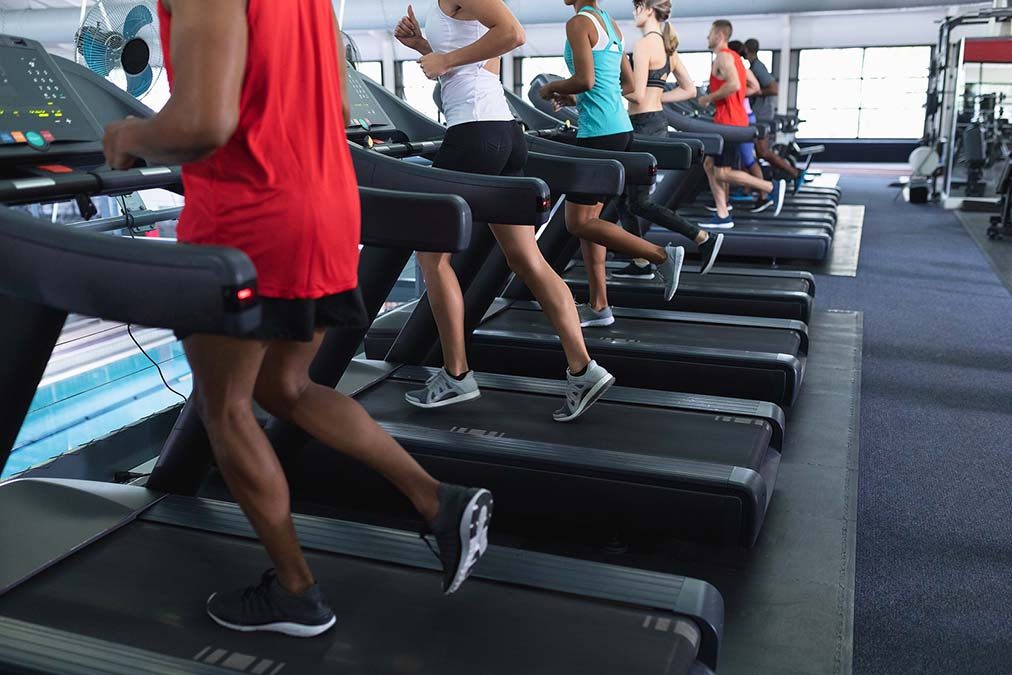 In the past two months, two studies have appeared in academic journals that show how exercise is extremely beneficial in treating nonalcoholic fatty liver disease (NAFLD).
In the past two months, two studies have appeared in academic journals that show how exercise is extremely beneficial in treating nonalcoholic fatty liver disease (NAFLD).
One study in Molecular Metabolism shows how exercise can counteract nonalcoholic fatty liver disease (NAFLD).
Another published in the Journal of Clinical Endocrinology and Metabolism reveals which exercise is best for reversing NAFLD.
German researchers published their findings from a study on mice in Molecular Metabolism. They knew previous studies had found that exercise could combat NAFLD, so they wanted to know how this is the case.
They fed their mice a high-energy diet akin to what many people in developed countries eat, leading to a state they called overnutrition. They then split the mice into a treadmill exercise group and a no-exercise group.
After six weeks, they examined the livers and muscles of the mice and compared the two groups.
They discovered many positive signs in the exercise group:
-
1. Their cholesterol was lower.
2. Their blood sugar was lower.
3. Their glucose intolerance was lower.
4. Less fat was stored in their livers.
5. Their muscles and other cells could use more energy, which required less to be stored in their livers.
How did exercise do all this?
Exercise regulates enzymes related to glucose and fructose metabolism, as well as cell metabolism in general, which is called mitochondrial pyruvate metabolism.
The mitochondria’s job is to make energy available to cells, so if exercise promotes enzymes that boost the mitochondria, then cells will use energy instead of sending it to the liver to be stored.
Researchers from Western Sydney University led the team that published the second study in The Journal of Clinical Endocrinology and Metabolism. They wanted to know which exercise was best for preventing NAFLD: high-intensity interval training (HIIT) or moderate-intensity continuous training (MICT).
To find out, they surveyed the scientific literature for studies comparing the two exercise types with each other or comparing either type to a no-exercise group. They also required that the studies measured liver fat via magnetic resonance imaging (MRI).
Only 19 studies with 745 participants met their strict requirements, but this was more than enough to draw a strong conclusion.
This is what they found:
-
1. The studies comparing high-intensity interval training and moderate-intensity continuous training showed that there was no difference between the two groups in their ability to reduce liver fat.
2. The studies comparing high-intensity interval training to no exercise found that the former could reduce liver fat by 2.85%.
3. The studies that compared moderate-intensity continuous training to no exercise found that the former could reduce liver fat by 3.14%.
4. The duration of exercise and the calories burnt during exercise did not significantly affect liver fat storage.
This shows that both are approximately equally effective at cutting liver fat.
Since high-intensity interval training takes less time to do than moderate-intensity continuous training, busy people might opt for that as an exercise method.
But long-distance runners who build their fitness with moderate-intensity continuous training don’t have to worry that their moderate-intensity exercise is less effective at preventing NAFLD.

 Overcoming IBD
Overcoming IBD Multiple Sclerosis
Multiple Sclerosis Banishing Bronchitis
Banishing Bronchitis Gum Disease Gone
Gum Disease Gone Overcoming Onychomycosis
Overcoming Onychomycosis Neuropathy No More
Neuropathy No More The Prostate Protocol
The Prostate Protocol Brain Booster
Brain Booster
 Ironbound
Ironbound
 Solution for Shingles
Solution for Shingles
 The Bone Density Solution
The Bone Density Solution
 The Ultimate Healing Protocol
The Ultimate Healing Protocol
 The Parkinson's Protocol
The Parkinson's Protocol
 The Chronic Kidney Disease Solution
The Chronic Kidney Disease Solution
 Overthrowing Anxiety
Overthrowing Anxiety The Fatty Liver Solution
The Fatty Liver Solution The Hypothyroidism Solution
The Hypothyroidism Solution
 The End of Gout
The End of Gout The Blood Pressure Program
The Blood Pressure Program
 The Oxigized Cholesterol Strategy
The Oxigized Cholesterol Strategy
 Stop Snoring And Sleep Apnea Program
Stop Snoring And Sleep Apnea Program
 The Arthritis Strategy
The Arthritis Strategy The Vertigo & Dizziness Program
The Vertigo & Dizziness Program The 3-Step Diabetes Strategy
The 3-Step Diabetes Strategy Hemorrhoids Healing Protocol
Hemorrhoids Healing Protocol The Erectile Dysfunction Master
The Erectile Dysfunction Master Weight Loss Breeze
Weight Loss Breeze The IBS Program
The IBS Program The Insomnia Program
The Insomnia Program The Migraine and Headache Program
The Migraine and Headache Program The Neck Pain Solution
The Neck Pain Solution The Menopause Solution
The Menopause Solution The Ejaculation Master
The Ejaculation Master The TMJ Solution
The TMJ Solution The Acid Reflux Solution
The Acid Reflux Solution The Fibromyalgia Solution
The Fibromyalgia Solution The Psoriasis Strategy
The Psoriasis Strategy